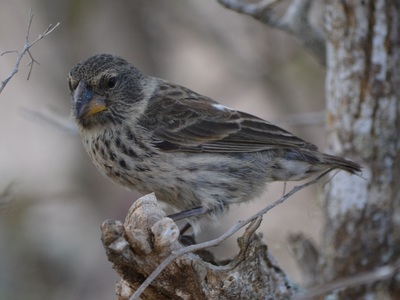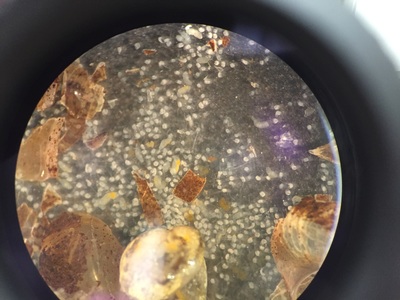|
Invasive species pose a major threat to global biodiversity. Aside from direct effects on ecosystems, such as competition with native species, invasive species can themselves be or introduce invasive parasites and pathogens. Transmission of parasites to novel hosts can lead to epidemics that devastate local host populations, even causing extinctions. My research uses field and lab tools in a multidisciplinary approach of invasion biology, evolutionary biology, and ecology to investigate the processes facilitating successful parasite invasions. |
One of the most pressing questions in invasion biology aims to understand if and how certain species overcome genetic bottlenecks during their initial invasion. Most invasions are assumed to be the result of a few individuals founding a new population in a previously uninhabited space. As a consequence of this small founding population, invasive species should suffer from population bottlenecks that reduce genetic diversity and thus, limit their ability to adapt to new environments. However, despite this restriction, biological invasions are common. Processes such as hybridization, multiple founding events, and rapid evolution of adaptive traits are hypothesized to help invading species overcome initial losses in genetic diversity. Alternatively, the success of invading species may be attributed to unique levels of phenotypic plasticity. For invasive parasites, the process is further complicated since the genetic diversity of the parasite, possible vectors, and the hosts they infect can all limit the success of an invasion.
In the Galapagos, the recent invasion of the avian vampire fly (Philornis downsi ) is considered to be a serious threat to the avian hosts it infects, including Darwin’s finches. P. downsi is a muscid fly that, in its larval stages, resides in the nest material of finches and feeds on the blood of nestling and adult birds. My earlier work showed that P. downsi can cause 60-100% mortality of infested nestlings. More recently, we found that P. downsi collected from multiple islands in the Galapagos had a high degree of population level similarity, suggesting that the invasion was quite recent and/or the flies are able to move between the islands and interbreed. We partnered with National Geographic and Lindblad Expeditions to see whether we could find evidence for movement of the avian vampire fly via tourist boats. Despite their excellent prevention protocols, we still found an avian vampire fly hitchhiking on the boat between islands. Our future work aims to reconstruct the full invasion history of P. downsi in the Galapagos and to explore the ecological and evolutionary processes contributing to its successful invasion. Currently, this system offers students the opportunity to gain experience using lab techniques such as DNA extraction, sequencing, and population genetics analysis.
In the Galapagos, the recent invasion of the avian vampire fly (Philornis downsi ) is considered to be a serious threat to the avian hosts it infects, including Darwin’s finches. P. downsi is a muscid fly that, in its larval stages, resides in the nest material of finches and feeds on the blood of nestling and adult birds. My earlier work showed that P. downsi can cause 60-100% mortality of infested nestlings. More recently, we found that P. downsi collected from multiple islands in the Galapagos had a high degree of population level similarity, suggesting that the invasion was quite recent and/or the flies are able to move between the islands and interbreed. We partnered with National Geographic and Lindblad Expeditions to see whether we could find evidence for movement of the avian vampire fly via tourist boats. Despite their excellent prevention protocols, we still found an avian vampire fly hitchhiking on the boat between islands. Our future work aims to reconstruct the full invasion history of P. downsi in the Galapagos and to explore the ecological and evolutionary processes contributing to its successful invasion. Currently, this system offers students the opportunity to gain experience using lab techniques such as DNA extraction, sequencing, and population genetics analysis.
We use the invasive aquatic faucet snail (Bithynia tentaculata) and the non-native trematode parasites (Cyathocotyle bushiensis, Sphaeridiotrema globulus, and Leyogonimus polyoon) that it vectors to address questions related to the evolution of virulence. This snail was introduced to the Great Lakes region in the late 1800s and has since slowly progressed westward and southward. The forefront of the invasion now lies in the upper Mississippi River region, where large-scale waterfowl die-offs are being attributed to these trematodes. The trematodes use the faucet snail as their first and second intermediate hosts and waterfowl as their definitive hosts. We are currently collecting snails (and trematodes) from throughout the Great Lakes and Mississippi regions to begin addressing fundamental questions about the evolution of virulence and impacts on transmission dynamics. This project currently provides opportunities for students to gain experience working in the field, performing animal husbandry, molecular techniques, experimental design and analysis.










